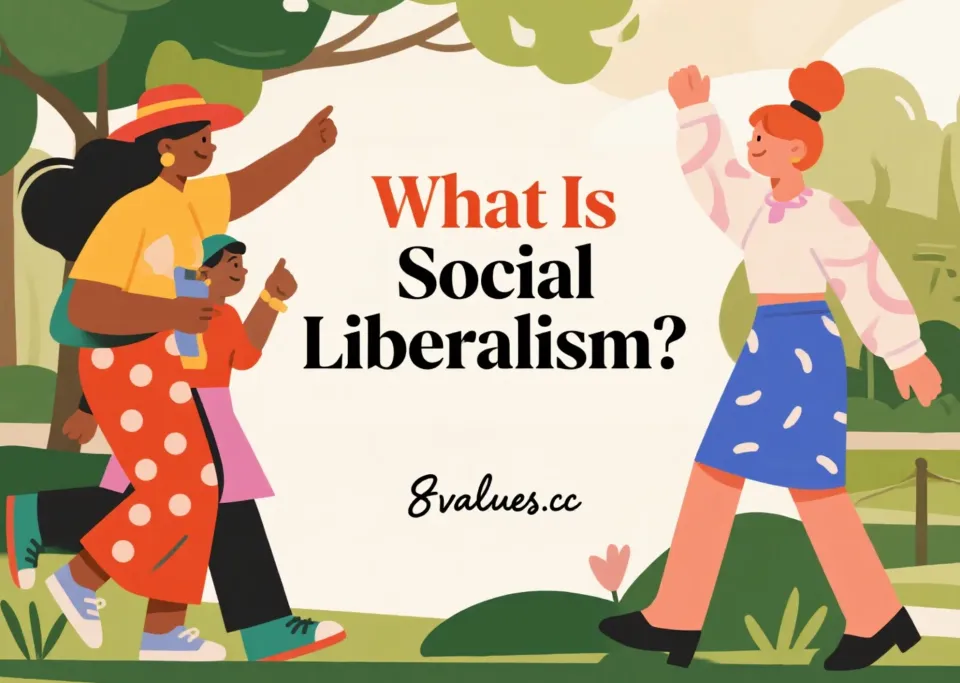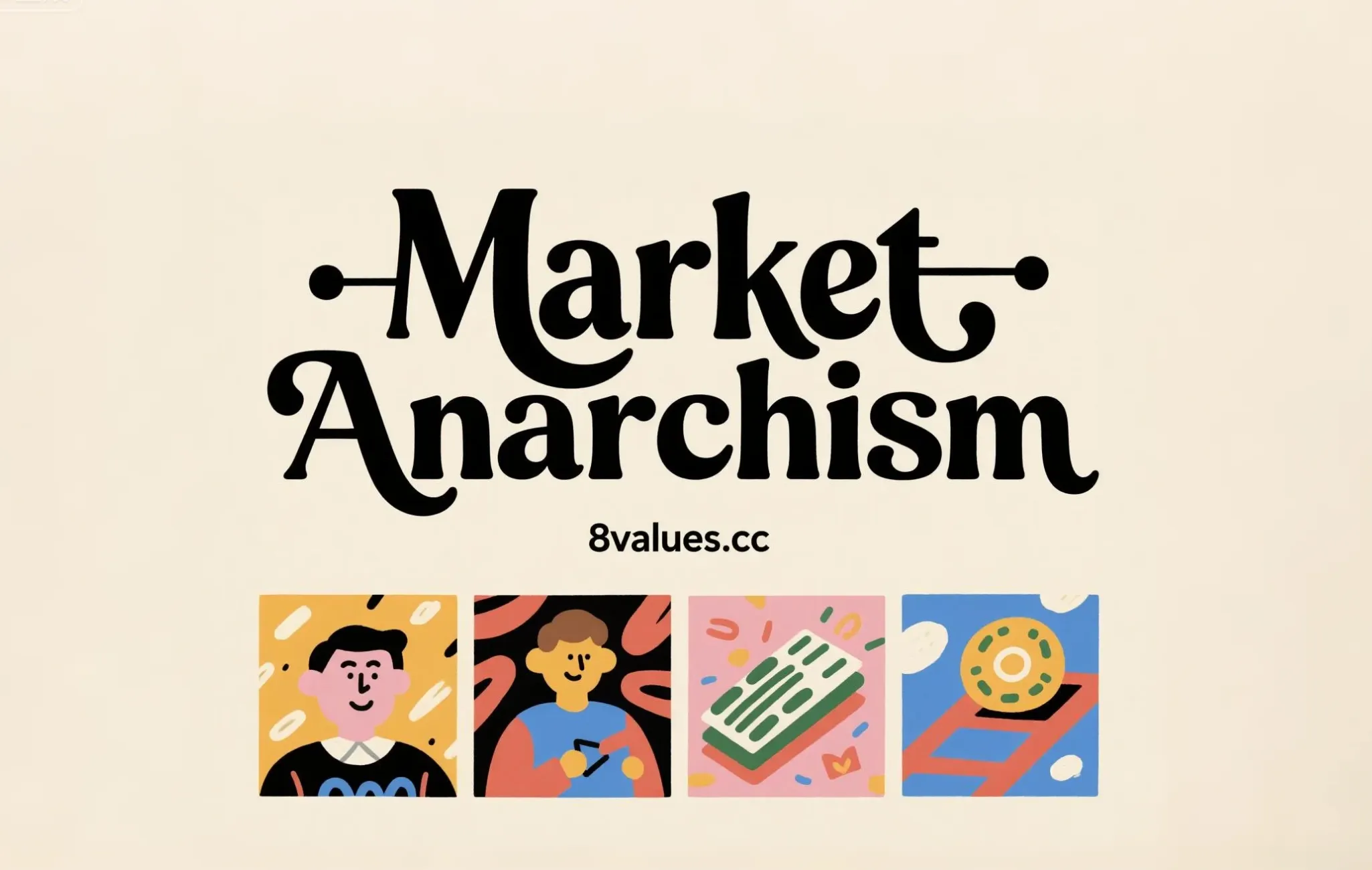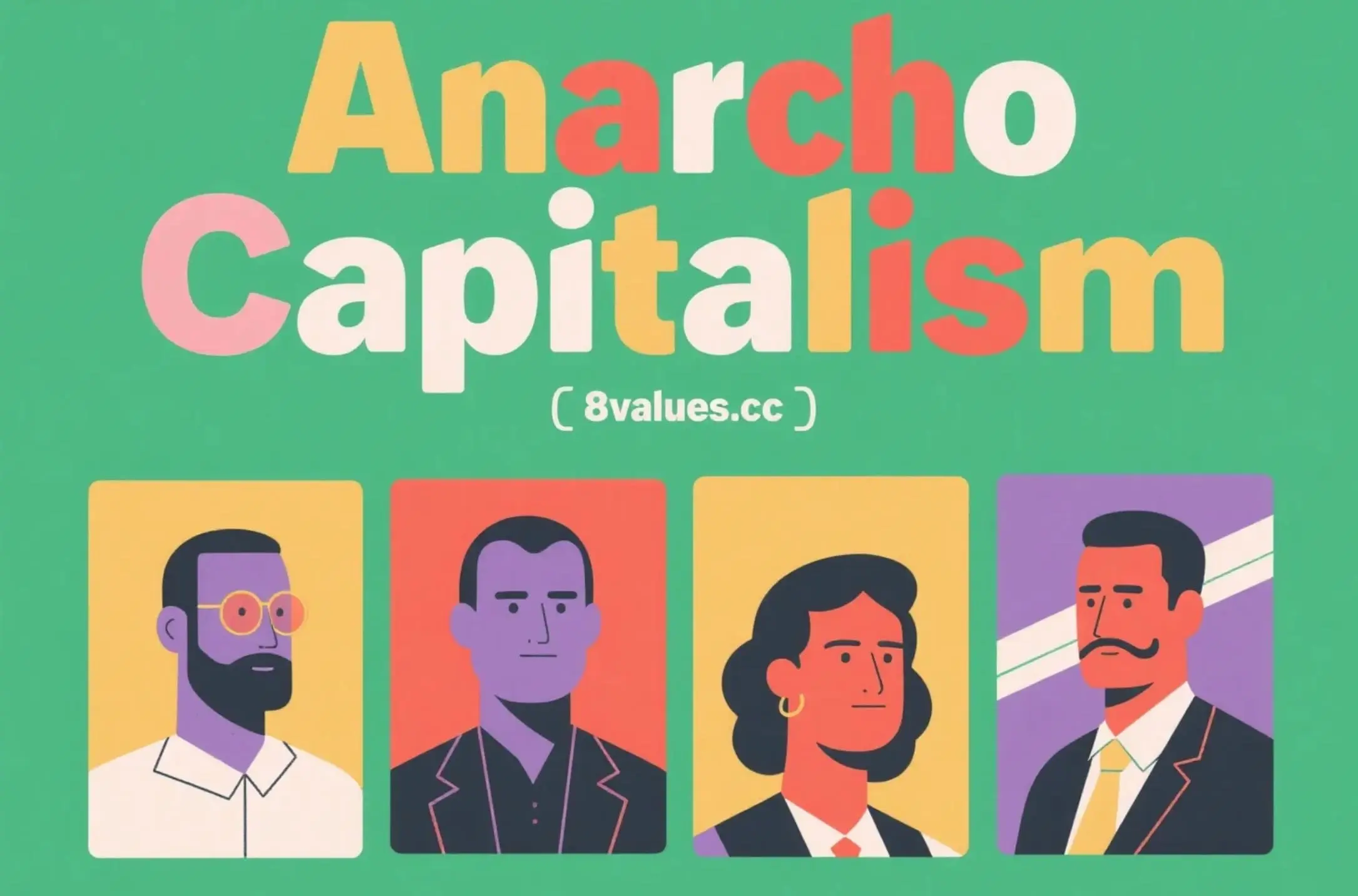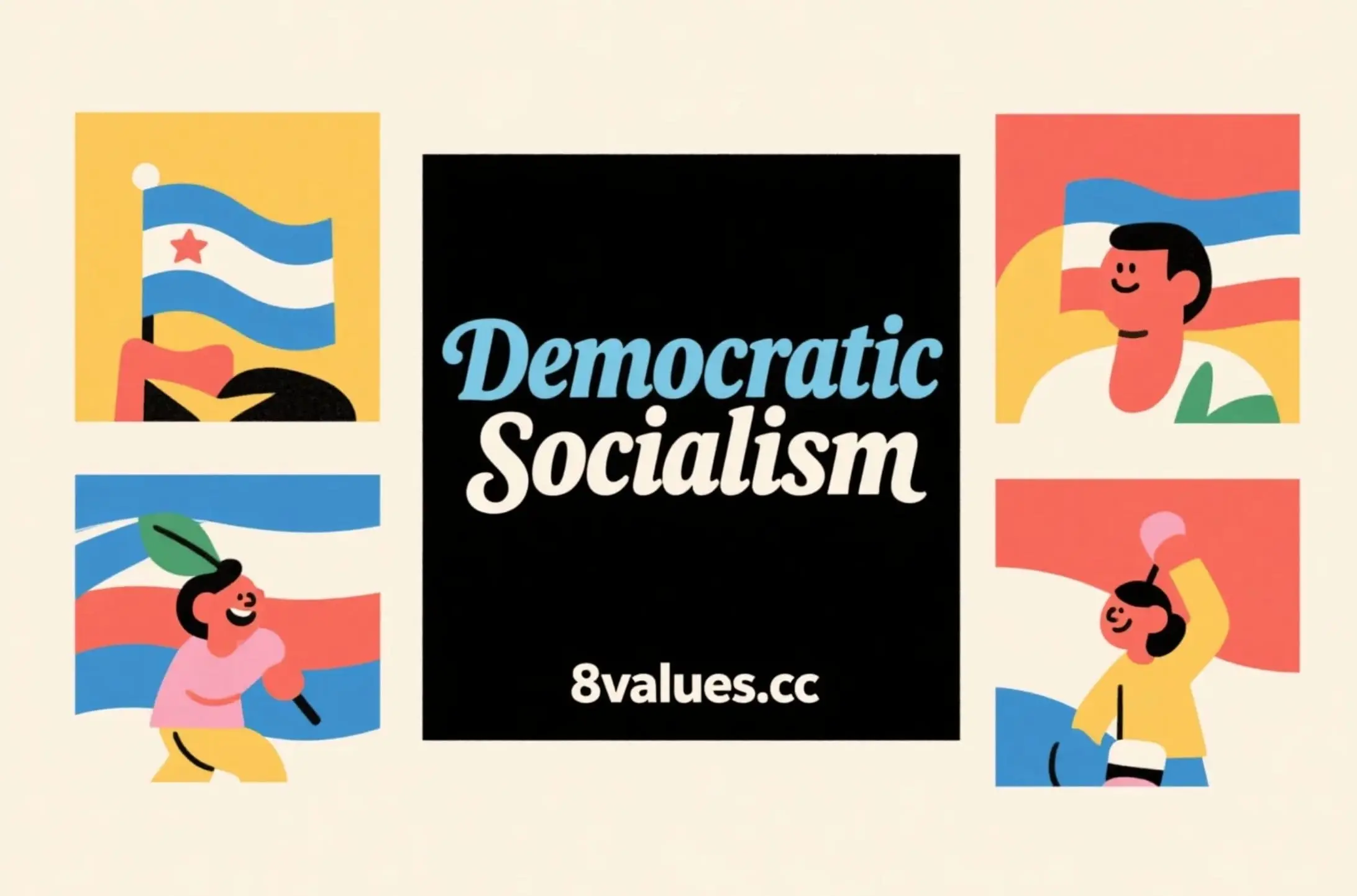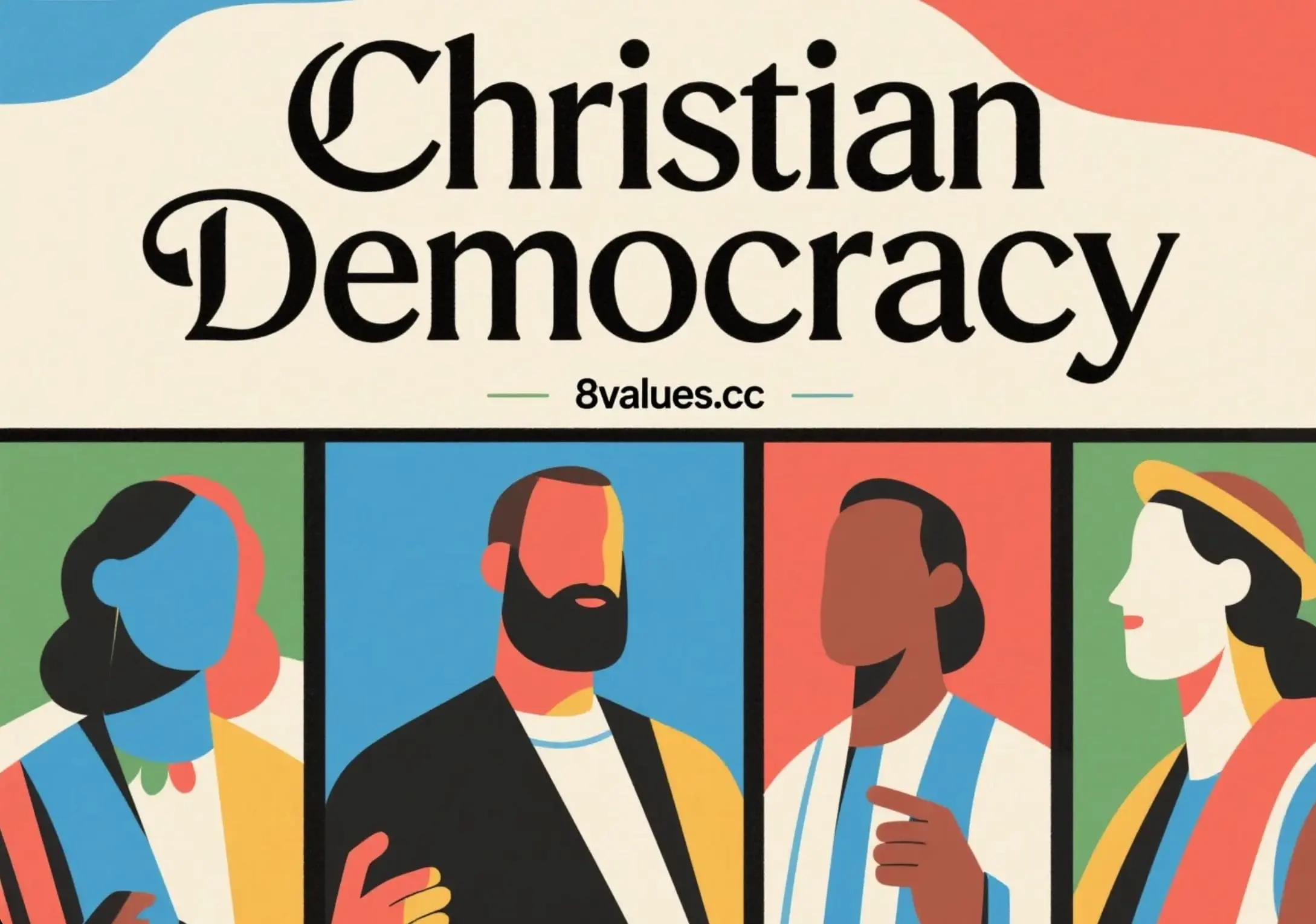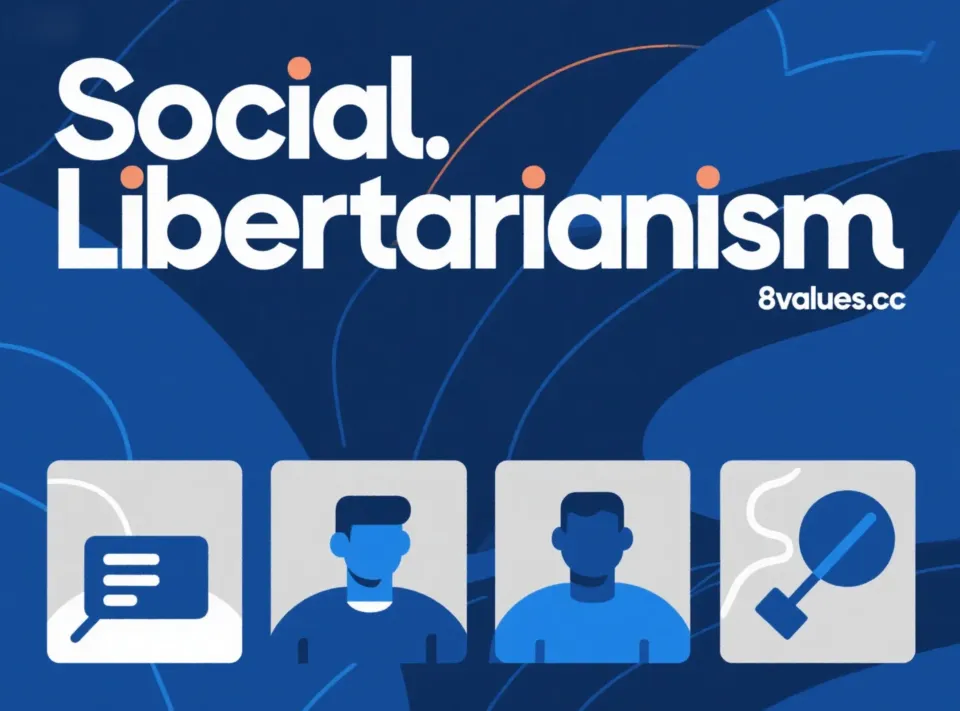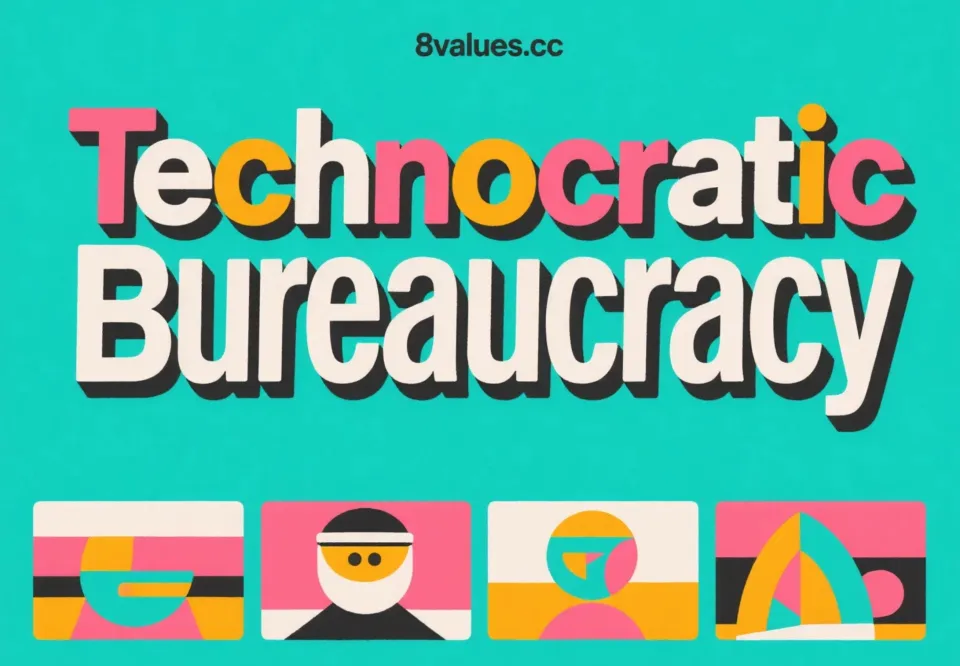ลัทธิเสรีนิยมทางสังคมคืออะไร: การทำความเข้าใจปรัชญาและแนวโน้มทางการเมืองของคุณ
สำรวจคำจำกัดความของลัทธิเสรีนิยมทางสังคมหลักการหลักความคล้ายคลึงและความแตกต่างกับอุดมการณ์อื่น ๆ และการปฏิบัติและความท้าทายในสังคมร่วมสมัย สำรวจปรัชญาการเมืองนี้ที่สมดุลเสรีภาพส่วนบุคคลกับความเท่าเทียมทางสังคมและเข้าใจความโน้มเอียงทางการเมืองของคุณ
ในสเปกตรัมทางการเมืองที่ซับซ้อน ลัทธิเสรีนิยมทางสังคม เป็นปรัชญาทางการเมืองที่สำคัญที่พยายามค้นหาความสมดุลระหว่าง เสรีภาพส่วนบุคคล และ ความเท่าเทียมทางสังคม ความคิดนี้ตระหนักดีว่าเสรีภาพที่แท้จริงไม่เพียง แต่เสรีภาพจากการแทรกแซงของรัฐบาล (เสรีภาพเชิงลบ) แต่ยังเป็นโอกาสที่จะไล่ตามความฝันและพัฒนาในทุก ๆ ด้าน (เสรีภาพเชิงบวก) หากคุณอยากรู้อยากเห็นเกี่ยวกับปรัชญานี้หรือต้องการสำรวจว่ามันส่งผลกระทบต่อนโยบายและสังคมของเราอย่างไรบทความนี้จะให้ภาพรวมที่ครอบคลุมแก่คุณ
แนวคิดหลักของลัทธิเสรีนิยมทางสังคม
เสรีนิยมทางสังคม หรือที่รู้จักกันในนามเสรีนิยมสมัยใหม่หรือลัทธิเสรีนิยมสวัสดิการเป็นปรัชญาทางการเมืองที่ได้มาจากลัทธิเสรีนิยมแบบคลาสสิก แต่มันก็ก้าวไปอีกขั้นโดยการสนับสนุนว่ารัฐบาลควรแทรกแซงอย่างแข็งขันเพื่อส่งเสริม ความยุติธรรมทางสังคม ความเท่าเทียม และสวัสดิการทางแพ่ง มันเน้นอิสรภาพของแต่ละบุคคลในขณะเดียวกันก็เถียงว่ารัฐสามารถทำหน้าที่เป็นกำลังเชิงบวกในการจัดการกับความไม่เท่าเทียมทางสังคมมากกว่าเพียงแค่เป็นนิติบุคคลที่ลดลงซึ่งไม่รบกวนกิจการทางเศรษฐกิจและสังคม
หลักการสำคัญของปรัชญาการเมืองนี้ ได้แก่ :
- สิทธิส่วนบุคคลและความเป็นอิสระ : สนับสนุนเสรีภาพพลเมืองอย่างยิ่งเช่นเสรีภาพในการพูดความเป็นส่วนตัวและการคุ้มครองที่เท่าเทียมกันก่อนกฎหมายและคัดค้านการเลือกปฏิบัติตามเชื้อชาติเพศรสนิยมทางเพศหรืออัตลักษณ์อื่น ๆ
- ความยุติธรรมทางสังคมและความเสมอภาค : มุ่งมั่นที่จะลดช่องว่างทางเศรษฐกิจและให้ โอกาส ที่เท่าเทียมกันสำหรับทุกคนโดยเฉพาะอย่างยิ่งเพื่อปกป้องกลุ่มชายขอบ
- เศรษฐกิจแบบผสม : สนับสนุนการแนะนำ กฎระเบียบของรัฐบาล ภายใต้กรอบ ทุนนิยม ตรวจสอบให้แน่ใจว่ามีการแข่งขันที่ยุติธรรมผ่านการเก็บภาษีและค่าใช้จ่ายสาธารณะและป้องกันการแสวงหาผลประโยชน์
- บทบาทของรัฐบาลในผลประโยชน์สาธารณะ : เชื่อว่ารัฐควรจัดการกับความยากจนการดูแลทางการแพทย์การศึกษาและปัญหาการคุ้มครองสิ่งแวดล้อมเพื่อสร้างสังคมที่มีศักยภาพของแต่ละบุคคล
เสรีนิยมทางสังคมเกิดขึ้นในช่วงปลายศตวรรษที่ 19 และต้นศตวรรษที่ 20 โดยมีเป้าหมายที่จะตอบสนองต่อความไม่เท่าเทียมที่เกิดจากระบบทุนนิยมอุตสาหกรรม นักคิดเช่น John Stuart Mill, Leonard T. Hobhouse และ John Rawls มีผลกระทบอย่างลึกซึ้งต่อการพัฒนาทฤษฎีนี้ผลักดันลัทธิเสรีนิยมให้เปลี่ยนจากนโยบายเศรษฐกิจที่ไม่รู้ไม่ออกไปสู่การแทรกแซง มันเริ่มมีความสำคัญมากขึ้นหลังจากสงครามโลกครั้งที่สองสร้างรัฐสวัสดิการในยุโรปและ "ข้อตกลงใหม่" ของประธานาธิบดีแฟรงคลินดี. รูสเวลต์ในสหรัฐอเมริกา
การเปรียบเทียบระหว่างลัทธิเสรีนิยมทางสังคมและแนวคิดทางการเมืองอื่น ๆ
เพื่อให้เข้าใจถึงลัทธิเสรีนิยมทางสังคมได้ดีขึ้นเราสามารถเปรียบเทียบกับอุดมการณ์ทางการเมืองที่สำคัญอื่น ๆ :
เสรีนิยมทางสังคมและการอนุรักษ์สังคม
การอนุรักษ์สังคม มักถูกมองว่าเป็นสิ่งที่ตรงกันข้ามกับลัทธิเสรีนิยมทางสังคม มีความแตกต่างอย่างมีนัยสำคัญระหว่างทั้งสองในสี่ด้านหลักต่อไปนี้:
- การแทรกแซงตลาด : ลัทธิเสรีนิยมทางสังคมสนับสนุนการกำกับดูแลของรัฐบาลเพื่อหลีกเลี่ยงวิกฤตการณ์ในตลาดในขณะที่นักอนุรักษ์สังคมเชื่อว่ารัฐบาลควรเข้าไปยุ่งเกี่ยวกับตลาดในกรณีฉุกเฉินเท่านั้น
- นโยบายเศรษฐกิจ : เสรีนิยมทางสังคมสนับสนุน เศรษฐกิจที่หลากหลาย และรัฐบาลควรให้เงินทุนแก่พลเมืองโดยการจัดหาสินค้าสาธารณะในขณะที่การอนุรักษ์สังคมมีแนวโน้มที่จะแปรรูปรัฐบาลขนาดเล็กและความเป็นเจ้าของ
- ความยุติธรรมทางสังคม : ลัทธิเสรีนิยมทางสังคมเชื่อว่าความ ยุติธรรมทางสังคม และการบริการทางสังคมสามารถผลักดันสังคมไปข้างหน้าในขณะที่นักอนุรักษ์สังคมเชื่อว่าการรักษาค่านิยมอนุรักษ์นิยมและแบบดั้งเดิมเป็นวิธีที่จะส่งเสริมความก้าวหน้าทางสังคม
- สิทธิพลเมือง : เสรีนิยมทางสังคมให้ความสำคัญกับสิทธิพลเมืองและเสรีภาพที่เท่าเทียมกันการสนับสนุนความคิดริเริ่มที่มุ่งสร้าง ความเท่าเทียมกันทางสังคม ในขณะที่การอนุรักษ์ทางสังคมให้ความสำคัญกับสิทธิพลเมือง แต่ชอบเสรีภาพและลัทธิดั้งเดิม
เสรีนิยมทางสังคมและเสรีนิยมทางเศรษฐกิจ
เสรีนิยมทางเศรษฐกิจ เน้นสิทธิของรัฐและส่งเสริมการค้า ตลาดเสรี และไม่ค่อยอยู่ภายใต้การแทรกแซงของรัฐบาล สนับสนุนการ จำกัด การแทรกแซงของรัฐบาลการต่อต้านกฎระเบียบของรัฐบาลของอุตสาหกรรมและคัดค้านความเป็นเจ้าของสินค้าสาธารณะทำให้การแทรกแซงของรัฐบาลในกรณีที่เกิดวิกฤตการณ์ตลาดเท่านั้น ในทางตรงกันข้ามเสรีนิยมทางสังคมสนับสนุนให้องค์กรของรัฐและเอกชนพัฒนาตลาดด้วยกัน แต่ไม่เชื่อว่าตลาดสามารถควบคุมตนเองได้อย่างเต็มที่ นอกจากนี้ยังเชื่อว่ากฎระเบียบของรัฐบาลของอุตสาหกรรมมีความจำเป็นเพื่อปกป้องประชาชน
เสรีนิยมทางสังคมและเสรีนิยมคลาสสิก
ลัทธิเสรีนิยมแบบคลาสสิก เกิดขึ้นเร็วกว่าลัทธิเสรีนิยมทางสังคมและมุ่งเน้นไปที่สิทธิส่วนบุคคลการแทรกแซงของรัฐบาล จำกัด เสรีภาพในการพูดและสิทธิในทรัพย์สิน ความแตกต่างที่ใหญ่ที่สุดระหว่างทั้งสองคือความคาดหวังของรัฐบาล Liberals คลาสสิกมักจะสนับสนุน "เสรีภาพเชิงลบ" คืออิสรภาพจากการแทรกแซงของรัฐบาลเช่นเสรีภาพในการพูดหรือเสรีภาพทางศาสนา ในทางกลับกันพวกเสรีนิยมทางสังคมเชื่อว่ารัฐบาลควรรับผิดชอบ สวัสดิการสังคม ของประชาชนของพวกเขาสะท้อนให้เห็นถึง "เสรีภาพเชิงบวก" เช่นเสรีภาพจากความหิวโหยหรือเสรีภาพในการศึกษา
เสรีนิยมทางสังคมและประชาธิปไตยทางสังคม
ประชาธิปไตยทางสังคม คือการประยุกต์ใช้ทฤษฎีสังคมนิยมภายใต้กรอบของทุนนิยม แม้ว่าทั้งสองจะมีความคล้ายคลึงกันมากมายใน สวัสดิการสังคม และอาจดูคล้ายกันอย่างรวดเร็วก่อน แต่ความแตกต่างที่สำคัญคือ:
- ประชาธิปไตยทางสังคมส่งเสริม ความเป็นเจ้าของของรัฐ มากขึ้นในขณะที่ยังคงรักษาระบบเศรษฐกิจทุนนิยมและมีแนวโน้มที่จะแจกจ่ายความมั่งคั่งในวงกว้าง
- ลัทธิเสรีนิยมทางสังคมให้ความสำคัญ กับความเป็นเจ้าของส่วนบุคคล ซึ่งเสริมด้วยมาตรการสวัสดิการสังคมบางอย่างเพื่อแก้ปัญหาความไม่เท่าเทียม มันมุ่งเน้นไปที่กลไกการตลาดและตัวเลือกส่วนบุคคลมากขึ้นและเชื่อว่าเศรษฐกิจบนพื้นฐานของลัทธิเสรีนิยมทางสังคมมีความสามารถในการส่งเสริมการเติบโตผ่านทุนมากขึ้น
"ลัทธิเสรีนิยมทางสังคมการอนุรักษ์ทางเศรษฐกิจ": ความขัดแย้งที่เป็นไปได้?
คุณอาจได้ยินคนมักจะอธิบายตัวเองว่า " สังคมเสรีนิยมอนุรักษ์เศรษฐกิจ " ซึ่งมักจะหมายความว่าบุคคลเชื่อว่าทุกคนควรมีสิทธิและโอกาสเดียวกัน แต่รัฐบาลไม่ควรรับรองการบำรุงรักษาสิทธิเหล่านี้ผ่านวิธีการทางการเงิน พวกเขาเห็นด้วยกับสิทธิมนุษยชนที่เท่าเทียมกันและการคุ้มครองสิทธิพลเมืองและยอมรับเศรษฐกิจที่หลากหลาย แต่ต้องการ จำกัด การใช้จ่ายของรัฐบาลในโครงการสวัสดิการและสินค้าสาธารณะและส่งเสริมการแปรรูปสินค้าสาธารณะเพื่อลดการใช้จ่ายของรัฐบาล
อย่างไรก็ตามการรวมกันนี้ได้รับการวิพากษ์วิจารณ์บางอย่างในช่วงไม่กี่ปีที่ผ่านมาและนักข่าวและนักวิชาการบางคนเชื่อว่ามันเป็นความขัดแย้งในตนเองโดยเนื้อแท้ การวิพากษ์วิจารณ์หลัก ได้แก่ :
- เป็นไปได้หรือไม่? บางคนเชื่อว่าหากคุณเป็นเสรีนิยมทางสังคมคุณต้องสนับสนุนนโยบายที่มีส่วนร่วมในการเสรีนิยมทางการเงินเช่นการระดมทุนโครงการสาธารณะที่ส่งเสริมความเป็นอยู่ที่ดีทางสังคม และอนุรักษ์นิยมทางการเงินอาจลังเลที่จะให้ทุนโครงการดังกล่าว
- การอนุรักษ์ทางการเงินเป็น "ราคาถูก" จริงหรือ? ในบางประเด็นโดยเฉพาะอย่างยิ่งในหมวดหมู่ของลัทธิเสรีนิยมทางสังคม ความเข้มงวด ทางการคลังอาจมีค่าใช้จ่ายสูง ตัวอย่างเช่นการลงทุนทรัพยากรมากขึ้นเพื่อต่อสู้กับ การเปลี่ยนแปลงสภาพภูมิอากาศ นำไปสู่การสูญเสีย $ 16 ล้านต่อชั่วโมงทั่วโลก ภายในปี 2593 การเปลี่ยนแปลงสภาพภูมิอากาศจะมีราคาหลายล้านล้านดอลลาร์ในแต่ละปี นักวิทยาศาสตร์เชื่อว่าหากมีการลงทุนเงินจำนวนมากเพื่อแก้ปัญหานี้อาจประหยัดกว่าในระยะยาว ในทำนองเดียวกันความล้มเหลวในการใช้นโยบายเพื่อขยายชนชั้นกลางในช่วง 50 ปีที่ผ่านมาได้นำไปสู่การหดตัวของชนชั้นกลางแทนที่จะทำให้ความต้องการความช่วยเหลือที่อยู่อาศัยเพิ่มขึ้นการควบคุมค่าเช่าและการเพิ่มขึ้นของค่าแรงขั้นต่ำซึ่งถือเป็นผลมาจากการอนุรักษ์การคลังในอดีต การเพิกเฉยต่อการก่อสร้างโครงสร้างพื้นฐานยังนำไปสู่ภัยคุกคามความปลอดภัยสาธารณะเนื่องจาก "ผลกำไร" ที่ชัดเจนและโครงสร้างพื้นฐานจำนวนมากในสหรัฐอเมริกาได้รับการจัดอันดับว่า "D" และการไม่ลงทุนระยะยาวได้กลายเป็นปัญหาเร่งด่วนระดับชาติ
การฝึกฝนและความท้าทายของลัทธิเสรีนิยมทางสังคม
แนวคิดของ ลัทธิเสรีนิยมทางสังคม สะท้อนให้เห็นในหลาย ๆ ประเทศประชาธิปไตยทั่วโลก ในสหรัฐอเมริกามันเกี่ยวข้องกับนโยบายที่ก้าวหน้าบางอย่างของพรรคประชาธิปัตย์เช่นมาตรการในช่วงระยะเวลาการจัดการใหม่และการสนับสนุนในปัจจุบันสำหรับการดูแลสุขภาพราคาไม่แพง (เช่น Obamacare) และการขยายสิทธิพลเมือง ในยุโรปมีอิทธิพลต่อฝ่ายต่างๆเช่นพรรคเดโมแครตเสรีนิยมในสหราชอาณาจักรหรือพรรคเดโมแครตเสรีนิยมในประเทศเยอรมนีเพื่อส่งเสริมความอดทนความหลากหลายและ ตลาดที่มีการควบคุม สวีเดนและเนเธอร์แลนด์ได้นำกฎหมายมาใช้เพื่อปกป้องการเข้าเมืองสิทธิ LGBTQ+ และบริการทางสังคมซึ่งสะท้อนถึงนโยบายเสรีนิยมทางสังคม
อย่างไรก็ตามลัทธิเสรีนิยมทางสังคมยังต้องเผชิญกับการวิจารณ์:
- ระดับเศรษฐกิจ : นักวิจารณ์เชื่อว่าการใช้จ่ายของรัฐบาลบางครั้งมีการแยกส่วนภาษีสูงเพิ่มภาระทางเศรษฐกิจและกังวลเกี่ยวกับการเพิ่มขึ้นของหนี้ภาครัฐ
- ความท้าทายในการดำเนินการ : การดำเนินการตามนโยบายอาจได้รับผลกระทบจากความไร้ประสิทธิภาพของระบบราชการการขาดวิธีการและการแก้ปัญหาในทางปฏิบัติและเสรีภาพส่วนบุคคลที่ จำกัด
- ความกังวลเกี่ยวกับการพึ่งพาอาศัยกัน : อนุรักษ์นิยมทางสังคมโดยเฉพาะอย่างยิ่งความกังวลว่าผู้คนอาจต้องพึ่งพาโปรแกรมสวัสดิการซึ่งจะช่วยลดแรงจูงใจในการทำงานและความเต็มใจที่จะพึ่งพาตนเอง
สำรวจความโน้มเอียงทางการเมืองของคุณ
การทำความเข้าใจกับ เสรีนิยมทางสังคม และความคล้ายคลึงกันและความแตกต่างกับแนวคิดทางการเมืองที่หลากหลายเป็นขั้นตอนสำคัญที่จะได้รับความเข้าใจในเชิงลึกเกี่ยวกับภูมิทัศน์ทางการเมืองสมัยใหม่ ไม่เพียง แต่ช่วยให้เราวิเคราะห์นโยบายทางสังคมในปัจจุบัน แต่ยังช่วยให้เราเข้าใจคุณค่าที่อยู่เบื้องหลังตำแหน่งทางการเมืองที่แตกต่างกันได้ดีขึ้น
หากคุณอยากรู้อยากเห็นเกี่ยวกับ ความโน้มเอียงทางการเมือง ของคุณหรือต้องการได้รับความเข้าใจที่ลึกซึ้งยิ่งขึ้นเกี่ยวกับสถานที่ของคุณในสเปกตรัมทางการเมืองคุณได้รับเชิญอย่างจริงใจให้เข้าร่วมใน การทดสอบความโน้มเอียงทางการเมือง ฟรีของเรา โดยการทดสอบเสร็จสิ้นคุณไม่เพียง แต่ได้รับการวิเคราะห์ส่วนบุคคล แต่ยังสำรวจบทความเพิ่มเติมเกี่ยวกับแนวคิดทางการเมืองที่แตกต่างกันเพื่อขยายขอบเขตทางการเมืองของคุณ เยี่ยมชม บล็อกอย่างเป็นทางการ ของเราสำหรับข้อมูลเชิงลึกเพิ่มเติม
